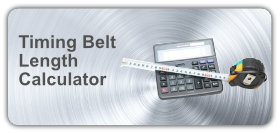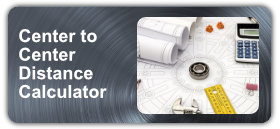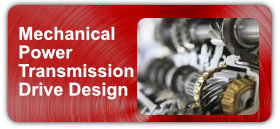Timing Belt Pulley - Standard Tolerances
Pfeifer Industries’ timing belt pulleys are precisely made to exacting tolerances ensuring that the timing belt and timing belt pulleys perform as intended. Most people would agree that a gear is a precise, quality demanding CNC machined part that requires a certain degree of skill to manufacture. The manufacturing of a timing belt pulley is no different. Both a gear and a timing belt pulley go through many of the same manufacturing steps to be produced. In order to be made correctly, close tolerances have to be maintained throughout production. The overall performance and longevity of the timing belt is directly related to the accuracy of the timing belt pulleys’ manufacturing.
Pfeifer Industries follows the manufacturing quality control standards for timing belt pulleys dictated by the leading timing belt manufacturers:
And the standards of the following timing belt/timing belt pulley related associations.
- Rubber Manufacturers Association (RMA)
- Mechanical Power Transmission Association (MPTA)
- IP-24 Synchronous Belts (MXL, XL, L, H, XH, and XXH Belt Sections)
- IP-27 Curvilinear Toothed Synchronous Belts (H3M, R3M, S3M, H5M, S5M, H8M, R8M, S8M, H14M, R14M, S14M, H20M, AND R20M Belt Pitches
- International Organization for Standardization (ISO)
- ISO 5288:2001 Synchronous belt drives – vocabulary
- ISO 13050:1999 Curvilinear toothed synchronous belt drive systems
- ISO 5294:1989 Synchronous belt drives - pulleys
Whenever possible, Pfeifer Industries adheres to those quality control standards which are more stringent.
In order to manufacture a quality timing belt pulley, the correct timing belt tooth profile needs to be duplicated. Pfeifer Industries employs gear hobbing to reproduce the timing belt tooth profiles. The inspection process of the timing belt tooth profile (groove) is made on an optical comparator. The timing belt tooth profile must conform to an overlay provided by the timing belt manufacturer for a given number of timing pulley teeth. These overlays are often proprietary information of the timing belt companies and are only given to licensed manufacturers such as Pfeifer Industries. A different timing belt tooth profile overlay is necessary for each number of toothed pulleys.
The following charts and tables contain the standard tolerances used by Pfeifer Industries to aid in the design, manufacturing and inspection of the timing belt pulleys that Pfeifer Industries produces.
Timing Belt Pulley - Tolerances (General)
Timing Belt Pulley - Length of Bore Tolerances
Timing Belt Pulley - Face Width Tolerances
Additional amount of timing belt pulley face width recommended over nominal timing belt width for various timing belt pitch / timing belt tooth profiles.Add table values to nominal timing belt width for nominal timing belt pulley face width
Note:
The minimum unflanged timing belt pulley width may be reduced when the alignment of the drive can be controlled but shall not be less than the minimum flanged timing belt pulley width.
2mm Pitch
- (2mm Pitch) Timing Belt Pulley - Face Width Tolerances
3mm Pitch
- (3mm Pitch) Timing Belt Pulley - Face Width Tolerances
5mm Pitch
- (5mm Pitch) Timing Belt Pulley - Face Width Tolerances
8mm Pitch
- (8mm Pitch) Timing Belt Pulley - Face Width Tolerances
9.525mm Pitch
- (9.525mm Pitch) Timing Belt Pulley - Face Width Tolerances
11mm Pitch
- (11mm Pitch) Timing Belt Pulley - Face Width Tolerances
14mm Pitch
- (14mm Pitch) Timing Belt Pulley - Face Width Tolerances
20mm Pitch
- (20mm Pitch) Timing Belt Pulley - Face Width Tolerances
Trapezoidal - Inch Pitch
- (Trapezoidal - Inch Pitch) Timing Belt Pulley - Face Width Tolerances
Trapezoidal - Metric Pitch
- (Trapezoidal - Metric Pitch) Timing Belt Pulley - Face Width Tolerances







